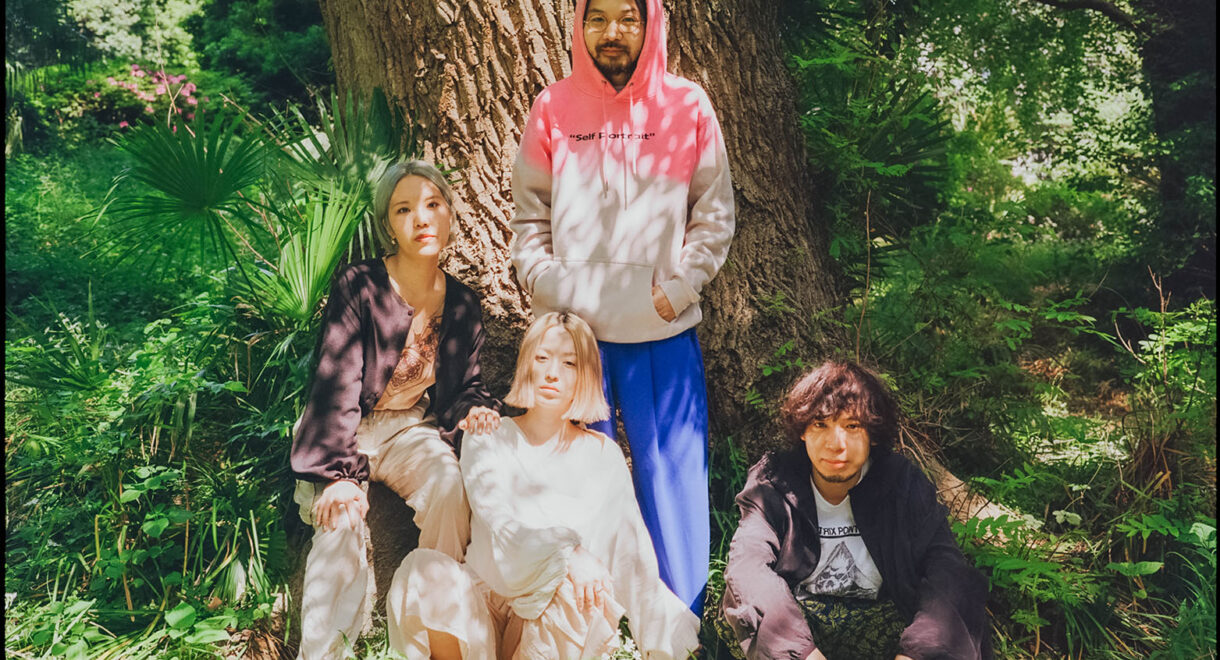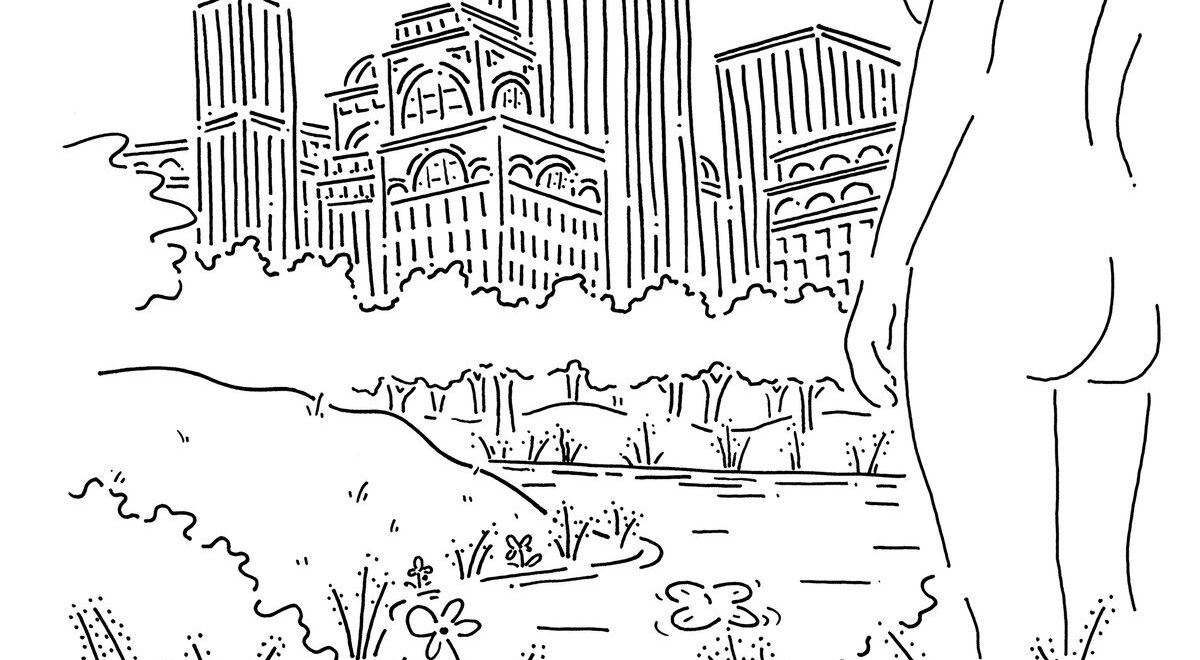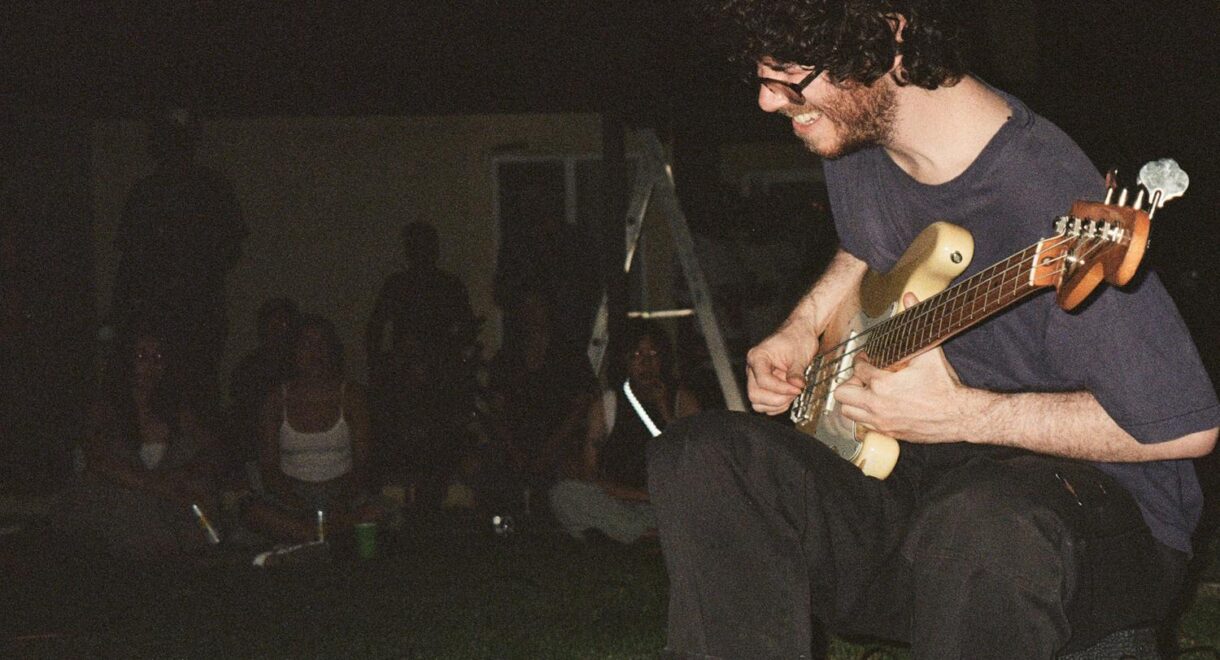Psychedelic pop sounds from Tokyo via Washington D.C. label Peoples Potential Unlimited. Andrew Morgan’s Peoples Potential Unlimited is widely regarded for its singular presentation of outsider boogie and […]
Babatunde Olatunji and his influence on Serge Gainsbourg’s ‘New York – U.S.A.’
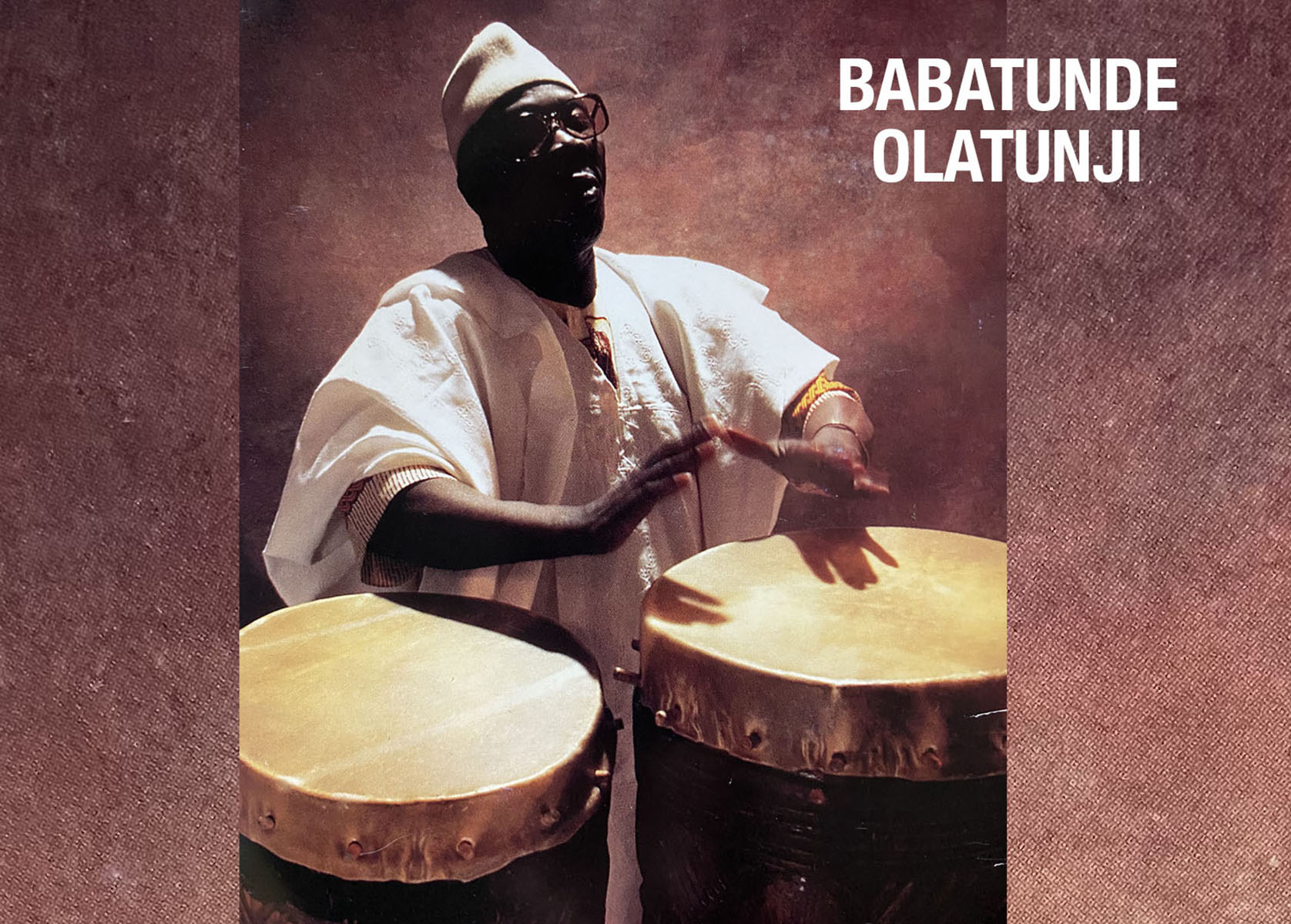
Part 2 on how the French singer “borrowed” from the Nigerian drum master.
(Editor’s note: this is Part 2 of this Feature, read Part 1 here: https://insheepsclothinghifi.com/serge-gainsbourg-babatunde-olatunji/)
Hailing from a village about 40 miles from Lagos, Nigeria, Michael Babatunde Olatunji grew up immersed in the sound and spirit of the drums of his native Yoruba culture. As he described in his autobiography The Beat of my Drum:
“I heard the drum while I was in my mother’s womb. I woke up every day to the beat of the drum… Drumming, dancing, singing were all part of life. I listened as the beat of the drum announced every celebration…”
From an early age, Olatunji was drawn to the master drummers in his village:
“As a little boy, when I was two or three years old, I would walk over and watch – the drummers in particular. Sometimes the master drummers would let me carry their drums, and in return they’d give me a lesson.
There was no school for drumming. Every child in the village is exposed to drums, and dances, and sings… In my village there was always music and everyone would grab something to play. But I went beyond that, I would follow the drummers everywhere. They would go from market to market, from village to village, and I would follow… Those of us who became drummers were the ones who went beyond that common exposure and learned the craft.”
In addition to his love for his local culture of drumming, Olatunji also had a passion for academics, which in 1950 spurred a relocation to America when he earned a scholarship to study political science at Morehouse College in Atlanta. After graduating, his next stop was New York City, where he attended the New York University Graduate School of Public Administration and International Relations, with a goal of becoming a diplomat.
While studying at NYU – this time without the aid of a scholarship – Olatunji started a West African drum and dance troupe and began playing gigs to help cover his student expenses. He also connected with a growing community of Black jazz musicians, artists, cultural and political figures in New York City, all of whom were inspired by an increasing awareness of their roots in the African continent. These connections were being forged at a time of rising Black consciousness, against the backdrop of the burgeoning Civil Rights movement.
Olatunji’s path from Nigeria to New York City was not dissimilar to Fela Kuti’s own journey around the same time from Nigeria to London, where Kuti originally intended to study medicine before a fateful switch to musical composition and trumpet performance at the Trinity College of Music. In both cases, indigenous non-western musical talent was transplanted to the foreign soil of western capitals, and was allowed to emerge and flourish when exposed to like-minded creative people, and international-quality institutions and resources.
At a concert at Radio City Music Hall, Olatunji’s performance caught the attention of Columbia Records A&R man John Hammond, who famously signed Billie Holiday, Aretha Franklin, Bob Dylan, Bruce Springsteen, and many others during his storied career. Soon enough, Hammond signed Olatunji to Columbia.
The first fruit of Olatunji’s contract with Columbia was the album Drums of Passion, an LP of spare arrangements consisting of thumping West African polyrhythms and chants, and little else. All the songs were either credited to Olatunji as the composer, or as traditional songs “revised and adapted by M. Olatunji”.
Released in 1959, Drums of Passion became a surprise hit. Along with Guy Warren’s Africa Speaks: America Answers! (1957) and jazz recordings such as “All Africa” from Max Roach’s We Insist! Max Roach’s Freedom Now Suite LP (1960) – which Olatunji also played on – Drums of Passion played a leading part in a first wave of record releases that began popularizing a more authentic African music that was situated beyond the mere tourism of ‘exotica.’ They were arguably the first albums of genuinely African music to gain traction with western (white) audiences.
A case study in Olatunji’s popularization of indigenous African music can be found in the chain of custody of one particular copy of Drums of Passion (unreleased in France at that time) that ended up in the hands of Serge Gainsbourg. According to the Gainsbourg biography Tout Gainsbourg, the French singer Guy Béart visited New York and was given a copy of Drums of Passion by Harry Belafonte. Béart took it back to Paris, lent the album to Philips artistic director Claude Dejacques as well as Philips recording artist Claude Nougaro, who ultimately shared it with label mate Gainsbourg.
For the recording of Gainsbourg Percussions in October 1964, Serge Gainsbourg commissioned arranger Alain Goraguer to faithfully reproduce Olatunji’s musical arrangements on Drums of Passion. At the recording sessions, Goraguer’s charts were played by a selection of local French musicians including a percussionist, a choir, and several jazz players. That the melodies, rhythms, and vocal chants for three songs on Gainsbourg Percussions were lifted wholesale from another artist’s album was not shared with the hired musicians.
Later on, though, Gainsbourg in an interview would make a rather cavalier admission of appropriating Babatunde’s music:
“…And then I used to listen to an album of ethnic music a lot: from the Africans I stole two three shots, cynically, from the blacks… Heh heh heh… ‘New York USA’ is based on a Watusi war song…”
(…Et puis j’écoutais beaucoup un album de musiques ethniques: aux Africains j’ai piqué deux trois plans, cyniquement, au noir… Hé hé hé… « New York USA » est basé sur un chant de guerre watusi…)
Gainsbourg’s claim that New York – U.S.A. is “based on a Watusi war song” is disingenuous. The song is actually a lyrical re-write and wholesale duplication of the rhythms, melody, and call-and-response vocals of Akiwowo (Chant to the Trainman) – a traditional Yoruban song with lyrics asking a train conductor to stop and let the singer on board – which Olatunji created a new arrangement for.
Olatunji of course wasn’t credited for his contributions to Gainsbourg Percussions, so in the mid-1980’s, decades after its release, Olatunji’s label Columbia confronted Philips over the absence of credits. History records this matter as being resolved in 1986, however Olatunji’s name didn’t appear on any subsequent re-issues and re pressings of Gainsbourg Percussions until the 2016 vinyl reissue on the Mercury label.
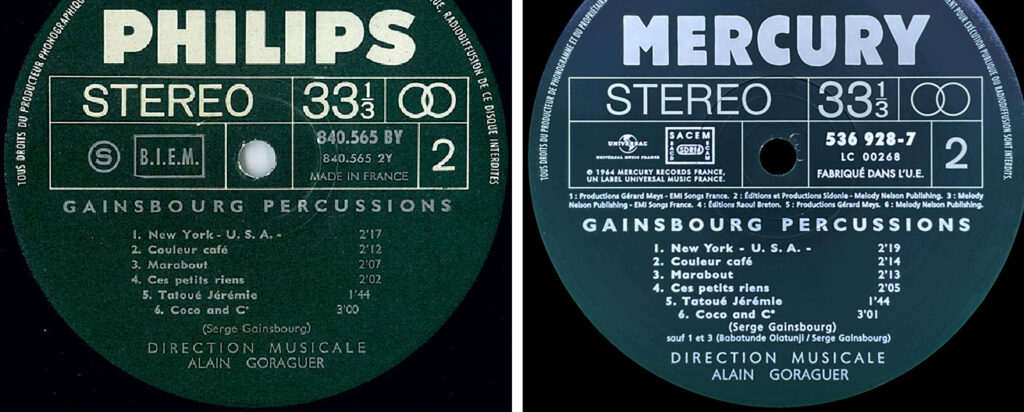
As difficult as it may be to put questions of authorship and copyright aside, when we momentarily look past them, it’s possible to see some subversive thinking in how Gainsbourg and Goraguer paired lyrics to music on the Olatunji songs on Gainsbourg Percussions. For example, New York – U.S.A., which reads as a paean to the Manhattan skyline, written from the ground-level perspective of an awestruck tourist:
I saw New York
New York U.S.A.
I’ve never seen anything
I have never seen anything so high
Oh ! It’s high it’s high New York
New York U.S.A.
Empire States Building (oh it’s high)
Rockefeller Center (oh! It’s high)
International Building (oh! It’s high)
J’ai vu New York
New York U.S.A.
J’ ai jamais rien vu d’au
J’ ai jamais rien vu d’aussi haut
Oh ! C’est haut c’est haut New York
New York U.S.A.
Empire State Building (oh ! c’est haut)
Rockfeller Center (oh ! c’est haut)
International Building (oh ! c’est haut)
In the same Discorama appearance where he’s interviewed by Denise Glaser, Gainsbourg performs New York – U.S.A., miming the lyrics while reverently gazing up at a blow-up of Manhattan skyscrapers.
In another performance of the song – filmed for an early music video format that was played on a visual jukebox called a Scopitone – Gainsbourg is cast as a workman perched on a window washer’s gantry suspended from a skyscraper.
The song was written in a time when America and American culture were held in high esteem in France – as celebrated in Gainsbourg’s later songs Ford Mustang (1968) and Bonnie and Clyde (1968) – before the moral questions of the Vietnam War and the intellectual fervor of the May 1968 protest movement in Paris began to sour the image of the U.S.A. in many French hearts and minds.
Despite not having visited the country at that time, New York – U.S.A. is the first of Gainsbourg’s homages to America, and celebrates the towering architectural wonders of America’s biggest metropolis at the peak of its economic and cultural influence in the mid-20th century. But by undergirding this tribute to Manhattan skyscrapers with West African drumbeats, Gainsbourg seems to be tacitly acknowledging the historic contributions of African slaves in the construction of the U.S. economy – an observation which in the mid-1960’s would have been a unique one for a white songwriter.
And unfortunately, just as the unpaid labor of West African slaves contributed to the construction of the American economic machine, Babatunde Olatunji’s uncredited musical work undoubtedly contributed to Gainsbourg’s music on Gainsbourg Percussions.
But despite the obvious financial harm done to Olatunji (which was belatedly rectified decades later), when applying the age-old question of cultural appropriation vs. homage to Gainsbourg Percussions, perhaps some good can be found in how Gainsbourg helped to expose the music of West Africa and Brazil to a larger white audience, at a time when little of it existed on European airwaves and record stores.
And by writing new lyrics to accompany these pilfered beats and melodies, Gainsbourg’s use of other artists’ musical material became part of a process of selection and synthesis that when viewed through a forgiving lens, rises above simple theft. Like many great musicians and artists, Gainsbourg created clever musical ‘marriages’, borrowing (or stealing) disparate bits from other musical sources, then synthesizing them into his own unique formulations. This was a technique he first tried on Gainsbourg Percussions in 1964, and would develop and use repeatedly for the rest of his career.
Similar to his later re-purposing of a Dvorak symphonic motif into the soaring chorus of Initiales B.B. (1968), Gainsbourg’s re-use of Olatunji’s music (despite the legal penalty that was rightfully levied on him) can be seen as one act in a career full of unexpected pairings of disparate musical elements. His controversial fusing in 1979 of France’s national anthem “La Marseillaise” to a reggae groove (re-titled “Aux Armes Et Caetera”) is another example of this type of synthesis.
As interviewer Denise Glaser put it back in 1965 – when she seemed to preemptively address the Olatunji authorship controversy that would arise decades later – the individual elements that Gainsbourg brought together weren’t new, but the marriage was.
Read Part 1: https://insheepsclothinghifi.com/serge-gainsbourg-babatunde-olatunji/
In Sheep’s Clothing is powered by its patrons. Become a supporter today and get access to exclusive playlists, events, merch, and vinyl via our Patreon page. Thank you for your continued support.




